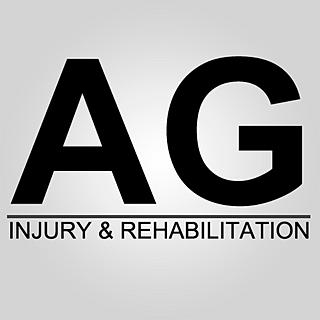I've rehabbed my ACL, now I have "Jumper's Knee"!
- Arun Gray
- Jul 18, 2017
- 4 min read
We all know I'm more injury prone than Chris Kirkland in his Liverpool days. Back at the start of the year I suffered a grade 2 tear to my right ACL. After 3 months out, I managed to get back to full(ish) fitness and play in the last few games of the football season. Now we're into pre season for the 2017/18 season and I've managed to pick up another niggle 2 days before the first friendly... a local derby!
Thankfully it's not too bad, but I have a bit of patella tendinopathy in my left knee, otherwise known as "jumper's knee". I'm not sure exactly how I've managed it but it's probably a combination of a neglecting any running for the whole of the off season while I've concentrated on swimming training - for my other job; a quick increase in training and training on hard ground.
So, what is Jumper's Knee?

Jumper's knee also known as patella tendonitis, is a common injury in people who participate in sports that involve a lot of jumping and landing.
Jumper's knee is believed to be caused by repetitive stress placed on the patella tendon (the tendon that connects the kneecap to the shin bone) or quadriceps tendon during jumping. It is a common injury in sportspeople, particularly those participating in jumping sports such as basketball, volleyball, or high or long jumping. Jumper's knee is occasionally found in football players, and in rare cases, it may be seen in athletes in non-jumping sports such as weight lifting and cycling, just to the excessive flexion/extension of the knee in training and participation. Overtraining and playing on hard surfaces have been implicated as risk factors. The patellar tendon experiences greater mechanical load during landing than during jumping, because of the eccentric contraction of the quadriceps.
It may actually be linked to past injury history. Looking at my personal case, injuring my right ACL meant weight bearing was uncomfortable in the acute stage. This subconsciously leads you to over compensation and put addition load in the uninjured leg to de-load the injury. This means my left knee (the "good" one) has been taking a larger percentage of the weight, which is increased in high impact activities such as landing after a header.
Signs and Symptoms of Jumper's Knee

A physical examination may reveal the following findings:
Tenderness of the patella (kneecap) or in the area between the patella and where the patella tendon attaches to the shin bone
Hamstring and quadriceps tightness
Normal ligamentous stability of the knee during testing
Normal knee range of motion
Normal neurovascular examination
Normal hip and ankle examination
Swelling due to fluid collection in the knee
Scans would usually only be conducted in extremely painful cases or when additional injuries may be expected. Usually a clinician would try conventional rehab before investigating further.
How To Treat Jumper's Knee?
Martin Koban suggested the Jumper's Knee Treatment Triangle as an effective template for patella tendinopathy rehabilitation. The treatment triangle will help you address the three most common causes for patellar tendonitis. I came up with the idea for the triangle during the research for my book Beating Patellar Tendonitis and while I deal with many other causes of this knee injury in the book, the three causes addressed with the treatment triangle are the most important.

His triangle suggests the three main causes of patella tendinopathy are poor ankle mobility, weak gluteal strength and bad leg alignment during athletic movement.
Ankle mobility essentially affects how you move. Poor ankle mobility during landing for example means increased proximal force absorption. Restrictions in ankle mobility also lead to bad leg alignment which cause issues again proximally, for example at the hip and spine.
Gluteal muscles control the knee position during movements. Weak glutes lead to excessive force being placed on the knees. Research has actually identified weak glutes as a risk factor for patella tendonitis.
Poor ankle mobility and glute strength usually caused bad leg alignment, so addressing those issues naturally helps remove the problem. Incorrect knee position adds load to one part of your knee and reduces load to another, causing imbalances and increased risk of injury. Imagine carrying a tray of glasses whilst you're walking. If the weight from the glasses is distributed to one side because your hand isn't holding them in a neutrally aligned position (flat) then you're at high risk of flipping the tray one side and dropping all the glasses. Whereas if you hold the tray flat, the weight off the glasses is distributed evenly over the surface of the tray and you will carry them easier without risking dropping them.
Now we've addressed treating the common causes of Jumper's Knee, we must treat the tendon itself. Each case is different due to the stage of injury however the main points to consider are:
- Load management
- Flexibility
- Structural imbalances
- Strength
- Proprioception
Have you ever suffered from or dealt with Patella Tendinopathy/Jumper's Knee? Let me know how it felt, what you did to fix it in the comments below!
COMING SOON: INJURY PREVENTION - THE KNEE







Comments